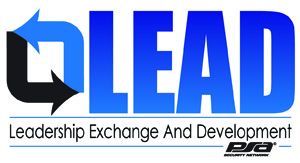
PSA Leadership Book Club Recap | The Curve Ahead – Part One
Featured Book: The Curve Ahead by Dave Power
Book Summary
Why do most growth companies stop growing? These fast-growing businesses are the engines of economic growth and wealth creation, but most fall behind the curve before reaching their potential. Executives are surprised when their business models mature sooner than expected, victims of the familiar S-Curve. Tragically, once-promising companies are often sold by investors too ready to throw in the towel. So what can leaders do to keep moving forward?
To sustain growth, companies need to discover their next S-Curve. But few have a repeatable process for uncovering new opportunities before their core business stalls. The Curve Ahead offers a practical approach to sustaining long-term growth. It describes how growth companies can build innovation into the rhythm of their business operations and culture using design thinking, prototyping, business model design and other Innovation Power Tools.
This book will help thousands of mid-sized companies stay ahead of the curve and discover the path to unlimited revenue growth.[1]
The Curve Ahead offers a practical approach to sustaining long-term growth. It describes how growth companies can build innovation into the rhythm of their business operations and culture using design thinking, prototyping, business model design and other Innovation Power Tools.
PSA Book Club Discussion
Leaders of all levels from the PSA integrator ranks gathered for a PSA Book Club discussion. The business novel in review was The Curve Ahead by Dave Power. The discussion centered on the five strategies the author advises are necessary to stretch the familiar S Curve that fast growing businesses often experience before reaching their full potential. The five strategies examined were as follows: penetrate new markets, enter new geographies, serve new customer segments, change pricing & packaging, and acquire similar businesses. The PSA book club representatives fielded some thought provoking questions, leading off with “if you had to choose just one strategy to stretch the S curve, which method would you choose?” Members of the group entertained some candid remarks and shared suggestions for each of the five strategies.
- Penetrating new markets:
- Talk to people outside of the security industry, they immediately think we deal with security guards (that monitor parking lots & office buildings). That is clearly not what (the majority of us) do. Security is extremely diverse and I think everyone probably knows that.
- Penetrating new markets requires diving deeper into what your customers’ needs are and presenting them with solutions that meet those needs and can solve their problems. That is a huge growth opportunity for everyone.
- Changing pricing and packaging:
- Examine your pricing and packaging. To capture RMR, bundle your service agreements, managed services, and/or monitoring licensing. Explain the value upfront within your initial proposal conversations.
- We developed a committee to review and make sure we are selling our services and packaging them in the right way to be successful with the sales team on down.
- We created a customized approach to having conversations with customers where the reps are asking questions of the customer to better uncover what problems need to be solved.
- The RMR piece – the tools were all there, we were just not selling it. We reinvented ourselves in how we compensate the reps, and how we presented RMR services. What we present is a package for better servicing customers and changing our whole packaging and pricing process to roll those RMR services into the quote – whether they want to see it or not.
- Serving new customer segments:
- We have primarily looked at 2 areas: (1) verticals and which are growing and expected to grow that we are not currently working in and (2) in some cases it’s looking at overlap between verticals and geography and looking at the market in general to find a position to grow.
- We have also been looking at industries that are positioned to grow outside of construction and are looking at how we can approach that from a vertical perspective and start working our way into those areas.
- We took what we did well and started to move it into other segments. We are a strong engineering group, but we were not selling our services as engineering professionals out into the marketplace. We received specifications and passed on bid work because it was not as profitable. We got specifications that came in that were poorly written which frustrated our engineering department. We have now turned that around to driving the specifications, providing the engineering for the end user and filling that need.
- Entering new geographies:
- As we continue to grow and work with new clients, the clients have taken us into new geographies.
- Acquire similar businesses:
- The nature of acquisitions raises the challenge of melding the cultures together. Culture clash is real. Not that one culture is better than another; they’re just a lot different.
- Sometimes acquisition is not as much about revenue expansion as it is about acquiring people and customers from someone who was exiting a business. It works more like a rollup into your company rather than acquiring someone new. It makes sense in a market that you have customers for some time and have serviced from afar.
[1] The Curve Ahead by Dave Power
